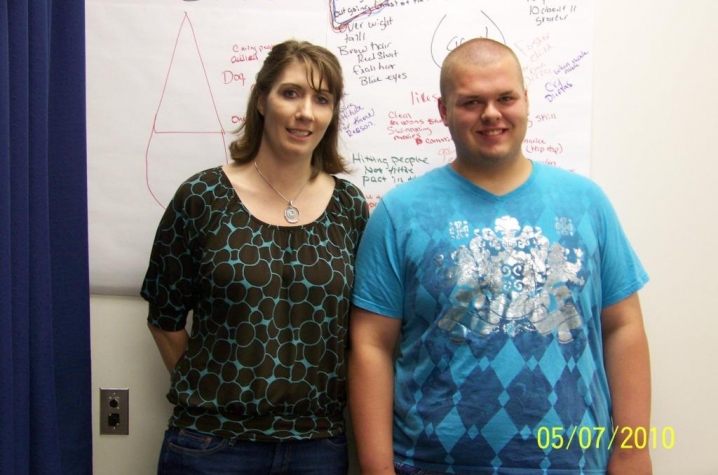Project MATCHES Resource Parents, Children

LEXINGTON, Ky. (Aug. 18, 2010) - What does a foster parent look like? That's a question that University of Kentucky Project MATCH program coordinator Jessica Morris and co-manager Jennifer Hall are hoping to answer.
In October 2008, the U.S. Department of Health and Human Services Children’s Bureau awarded Kentucky's Cabinet for Health and Family Services one of nine grants to explore recruitment for foster and adoptive parents for children in foster care.
The five-year grant, titled Project MATCH (Making Appropriate and Timely Connections for Children), is a collaborative initiative with UK's College of Social Work, Murray State University, the University of Louisville and Western Kentucky University, along with the cabinet to increase the pool of foster and adoptive parents to reflect each region’s needs; increase the effectiveness in locating and using appropriate family care; and to increase communication between public and private agencies.
"Many foster kids have more challenging needs," explained Hall. "And continuing to move kids from home to home makes it worse. This grant is helping us spread the word about the kids we have in foster care. Those interested in fostering and adopting don't always know about all the agencies who provide service to Kentucky’s out-of-home care children."
Four regions of Kentucky were selected at random for five interventions approved by the Children's Bureau, and each area has also been assigned a control region for the experimental study. The Lakes region will be compared with the Cumberland; Two Rivers will be compared with the Salt River Trail; Eastern Mountain will be compared with Northeastern; and Southern Bluegrass will be compared with Northern Bluegrass.
Hall and Morris are hoping to see improvements in the number of licensed foster and adoptive homes who are willing to provide a home for teenagers, sibling groups and children with extraordinary emotional and/or medical needs, as well as an improvement in permanency for these children.
Project MATCH began its work last year by pulling all of the foster care and adoption agencies together in each region, which was a task unto itself. "We're trying to get the point across to the public, private agencies and the state that it doesn't matter what foster care agency a parent may decide to work with," said Hall. "We need the available homes to reflect the needs of the children who are in the foster care system."
The program utilizes current foster parents for recruitment, hiring eight current foster parents part-time as recruitment specialists. "We wanted to get a good view of who our foster parents are, what they're doing and what activities they're engaging in," said Hall. "These parents live it and can explain it better than we can."
Project MATCH has been able to make use of Nielsen Services with some of the grant money as well, which has helped make the picture of a foster parent even clearer. Also, by using a technique known by many in the private sector as market segmentation, the project has taken 66 different profiles and narrowed them down into five cluster recruitment groups.
"We want to get the right kind of parents involved and keep them,"said Hall.
"What people have to remember is that kids come into foster care through no fault of their own," said Morris. "There are a lot of misconceptions out there. Parents think that these kids will steal, or that they're all violent, but if they get the stability they crave, these behaviors often go away."
While the study and its results will benefit foster care and adoption agencies throughout the state, at the end of the day it's about the kids. "Most of all, we're concerned about safety, permanency and well-being for these kids," said Hall. "The longer kids are in foster care, the worse off they are."
"Keeping these kids in a stable environment is the main thing," added Morris.
Hall and Morris hope to learn from the eight other states working on programs in addition to Kentucky, as well as providing useful data of their own. The study wraps up in 2013.
"We believe that there's a family for everyone," said Hall. "If we're going to take kids out of their homes and away from their families, because they're not safe, then we have to find them another family that's safer. That's our job."




